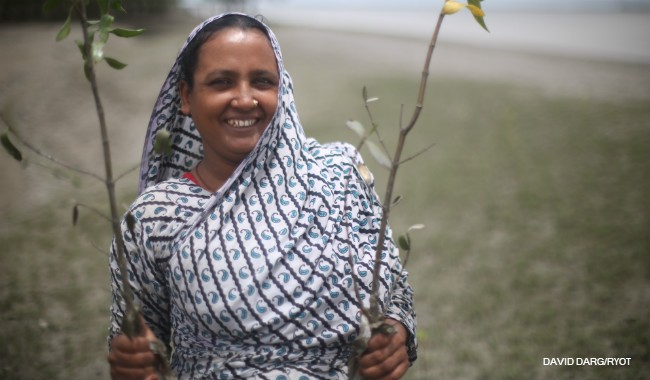
The majority of Bangladeshis rely on the country’s natural resources to support their livelihoods, which places tremendous strain on the environment and economy. Bangladesh is facing immediate climate change issues and must become resilient to frequent natural disasters, degradation of forest areas and wetlands, and meet the country’s energy demand without endangering the environment.
Improving Bangladesh’s resiliency is central to the U.S. Government’s Global Climate Change Initiative. USAID works with the Bangladesh Government to respond and adapt to climate change and mitigate its effects on the most vulnerable populations.
For more than a decade, USAID has helped Bangladesh protect its natural resources and biodiversity by bringing together local communities and the government to form committees that co-manage more than 700,000 hectares of wetlands and forest areas. These community co-management groups monitor protected areas to conserve flora and fauna, prevent illegal poaching, and reduce natural resource degradation. USAID also teaches people living near these protected areas new job skills to generate alternative income sources, directly increasing economic benefits to nearly 200,000 individuals.
Bangladesh is the most vulnerable country in the world to tropical cyclones and the sixth most-vulnerable nation to flooding. In response, USAID trains communities to become better prepared to mitigate the effects of natural disasters and recover from climatic shocks. These programs have helped establish early warning systems to alert people to flooding and incoming cyclones. USAID has also constructed multi-purpose cyclone shelters to provide a safe haven for communities and serve as primary school facilities when not used for severe weather in the most vulnerable areas of Bangladesh. In partnership with the U.S. Army Corps of Engineers, USAID will construct 100 shelters between 2010-2017.
In 2015, USAID programs
- Trained nearly 160,000 people to become less dependent on natural resources by learning new skills in agriculture, aquaculture and poultry to generate income and reduced pressure on sensitive habitats.
- Reduced carbon dioxide equivalent greenhouse gas emissions by more than 350,000 metric tons.
- Supported the construction of 33 multi-purpose cyclone shelters.
NEW: Read the 2016 Bangladesh Tropical Forest and Biodiversity Assessment
Millions of Bangladeshis depend on the Sundarbans, the world's largest mangrove forest, for food, resources, and shelter. See how USAID is working with Bangladesh to protect the forest, its native royal Bengal tigers and other important animal species, and help people living in this area become less reliant on natural resources for food and their livelihood.








Comment
Make a general inquiry or suggest an improvement.